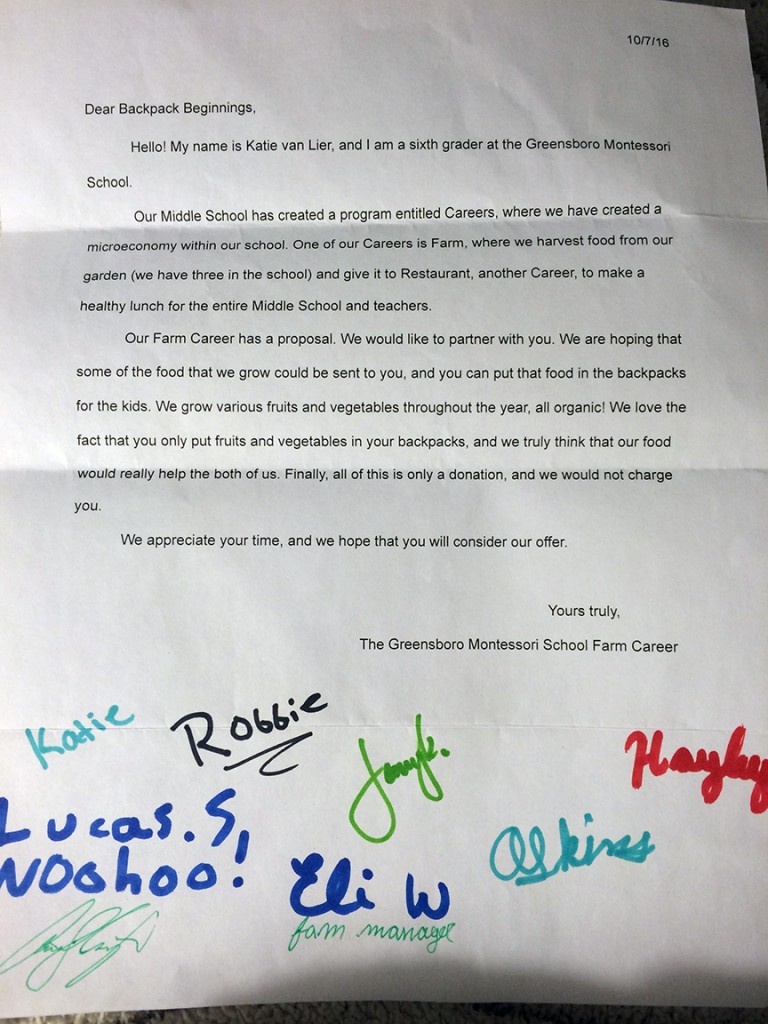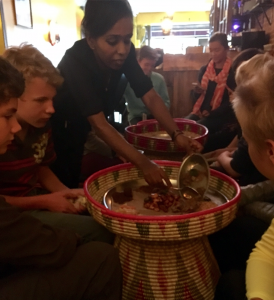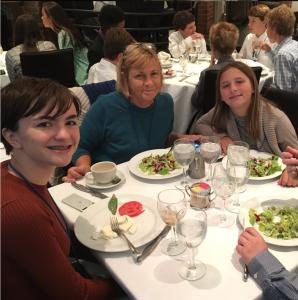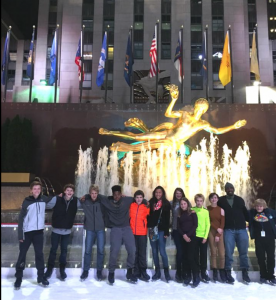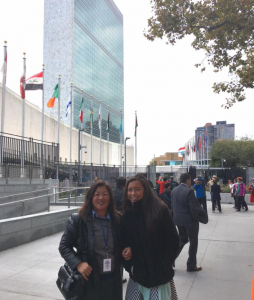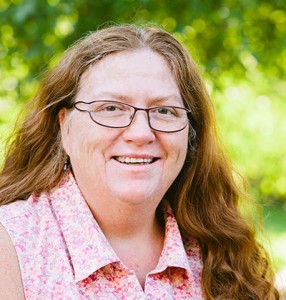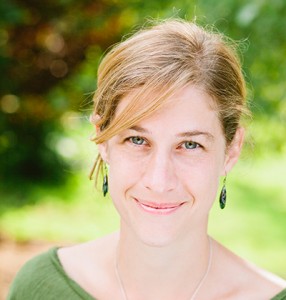Throughout the school year, the Junior High students at Greensboro Montessori School have multiple opportunities to delve into the study of economics through entrepreneurial experiences in both individual and group projects.
One project culminates in a Holiday Marketplace event that occurs annually during the second or third week of December.
Parents, students, friends and neighbors are welcome to come and shop at the 2017 Holiday Marketplace on Wednesday, Dec 13 from 9am-2pm in the gym.
The students work in small teams of two to three partners over the course of several weeks to develop a small business plan and manufacture a variety of hand-made products (art, food, clothing, gifts, etc.). These products are offered for sale to the entire community on the day of the marketplace event. The students are encouraged not only to design products that will make a profit but also products that are ethical and sustainable, benefiting the whole. This is a unique opportunity for the students to use their creativity, drive, talents, and business skills to make take home cash profits, which many use to fund their out of pocket expenses for overnight school field trips at the end of the school year.
In the Holiday Marketplace project, our young adolescents experience the true life of an emerging entrepreneur and small business owner:
- conducting research and development for their products,
- renting a booth/ retail space,
- creating a store front,
- paying utilities and taxes,
- developing marketing and customer service strategies,
- repaying their start up loans and
- calculating and equitably sharing their profit.
The "utilities, taxes and booth rental fees" that they pay are deposited into a school account that goes back into the Junior High to cover curricular and program expenses.
The Holiday Marketplace project represents just one aspect of how our students experience and study the principles and realities of economics. Another way is through their participation in a year-long micro-economy program that occurs every Friday. Unlike the marketplace project where the proceeds result in personal profit, the micro-economy program is designed so that any proceeds are reaped communally and expenditure must be decided on by the whole group. In some ways the micro-economy program is a “grown-up” version of the practical life lessons that are so effective in teaching our youngest students about respect for self, respect for the environment, and respect for the community as well as basic executive function skills.
The regular micro-economy program in the Junior High occurs in organized weekly sessions where the students experiment with practical life experiences in preparation for later life work. This emphasis on “real work,” as some would call it, is rooted in Dr. Maria Montessori’s belief that adolescents should learn about economic principles that govern production and exchange. By doing so, she proposed that adolescents would develop a deeper appreciation for available resources, the importance of hospitality, and that the work would provide a context for understanding human civilization and their role within it. This is work with the head and the hands! As part of micro-economy program, students engage in a plethora of meaningful work, which builds professionally applicable skills, encourages interdependence, and peaks intellectual curiosity.
Early in the school year, students begin the micro-economy program by preparing a resumé and applying for specific jobs. These jobs fall within three basic career areas, most of which directly relate to the operation of Maria’s Café, our commercially inspected restaurant program that serves a hot home-made lunch on Fridays. One team manages the kitchen including the menus, ingredients (both store bought and sourced from our gardens), food preparation and food service. Another team oversees the financial and marketing aspect of the micro-economy, and plans Junior High community events, outreach and fundraisers. The third team comprises a research and design lab that develops and fabricates new marketable products through use of tools and technology (3-D printer, state of the art design software, wood shop. etc.) and also produces the school’s yearbook.
This experience for our students is an example of applied learning at its best!
Greensboro Montessori School middle school students are excited to be giving back by donating produce harvested from our gardens to BackPack Beginnings. Last Friday marked our first official donation. Students within the Farm Career from the School's microeconomy program harvested two full crates of persimmons, peppers and bags of mixed greens, slated to go to students in need from Jones Elementary.
Several weeks prior, students sent a letter to BackPack Beginnings, extending their support and stating their eagerness to work with them. Then, our eighth grade Farm Manager called Tessa Kirkpatrick, Fresh Food Coordinator at BackPack Beginnings, to arrange a pick up for Friday.
Our relationship with BackPack Beginnings offers a wonderful example of how Greensboro Montessori School's unique middle school programs prepare students to be proactive, mature communicators who are capable of adult interaction. It also illustrates how our students want our school community to experience health and well-being while also helping the Greater Greensboro community to be “full” and nourished. We plan to continue to donate weekly to the BackPack Beginnings Fresh Food Initiative and hope that this is the start of a beautiful partnership.
More about BackPack Beginnings and the Fresh Food Initiative
BackPack Beginnings is a 100% volunteer 501(c)(3) organization focused on delivering child-centric services to feed, comfort and clothe children in need. By ensuring food and basic necessities are given directly to children in need, BackPack Beginnings makes a positive and lasting impact on their health and well-being. The organization was founded six years ago by Parker White, a local mom who wanted to provide hungry children with food over the weekends. BackPack Beginnings has since expanded beyond food back packs and now includes comfort back packs, clothing pantries and food pantries.
BackPack Beginnings' food back packs and pantries are enhanced by the organization's Fresh Food Initiative. Fresh fruits and vegetables improve children’s nutrition, help prevent chronic health issues and curb childhood obesity. More and more research also points to diets rich in fresh foods improving children's ability to learn and their overall school performance.
Led by volunteer Tessa Kirkpatrick (one of our very own Greensboro Montessori School parents), the Fresh Food Initiative focuses solely on making fresh fruits and vegetables available to children in need. Tessa coordinates with multiple agencies, churches, schools and community gardens each week to gather and redistribute fresh food throughout the county. Since July 1, 2016, the Fresh Food Initiative has distributed over 10,000 pounds of produce.
GMS: Tell us how your trip started
Jean-Lou: On Sunday we flew to New York. After we checked in at our hotel, we met some of the students from other schools. There were eight or nine other Montessori schools from different states and also the Dominican Republic. There were over 150 students at the conference.
Isabel: For most of the day on Monday, we heard presentations from many different NGOs [non-governmental organizations] about the work they are doing to help people around the world. Some of the organizations were Save the Rain, Vision For and From Children, Room to Read, and HeForShe.
Click Here to view a brief clip from the NGO presentation forum. Excerpt provided by chaperone, Joan Tao.
Jean-Lou: That day at lunch we went to an Ethiopian restaurant and for dinner we ate at a Moroccan restaurant. Later that night we met up with kids from two of the other schools and had a great time ice skating in Rockefeller Center.
GMS: Was there one aspect of the trip that was your favorite or was the most memorable?
Isabel: I loved being in New York City and everything about this trip. For me, the most memorable part was visiting the 9/11 Memorial and Museum. It is hard to describe the feeling of being there, but it helped me put into perspective all of the people who lost their lives. At the memorial fountain, you can read the names of all of the people who died that day. What I thought was really cool, is that white roses had been placed by the names of people to celebrate their birthdays.
Jean-Lou: I agree that being there was hard to describe. It was just like the quote that we saw on the wall of the museum. I took a picture of it with my camera. “No day shall erase you from the memory of time.”
GMS: Tell us about your tour of the United Nations building.
Jean-Lou: We visited the General Assembly Hall and an art exhibit about clearing land mines. We saw lots of different rooms and sculptures in the United Nations building and each had been contributed by a different country. On Tuesday, we also met with delegates from the Sierra Leone mission. One of the reasons we chose their mission is because our class will be reading the book, A Long Way Gone, later this year. It's a memoir of a boy growing up during the civil war in Sierra Leone.
Isabel: The delegates from Sierra Leone told us about the history of the country and how it was founded by Portuguese explorers who gave the country its name. It means “lions in the mountains." We learned about the civil war that broke out in the 1990s and then how the Ebola epidemic impacted the country a few years ago.
Jean-Lou: Before the Ebola outbreak, they had a rapidly growing economy, but then, all of the international companies withdrew. They made some very strict health rules to help control the spread of the disease. The delegates told us about their country's current president, Ernest Bai Koroma, and how their economy is starting to recover. It was sad to learn that after the Ebola epidemic many of the children were left without parents. But the delegates told us that in Sierra Leone there is a belief that everyone in the village is responsible for raising every child.
GMS: Tell us more about what you learned from the non-governmental organizations
Isabel: Many of the people giving the presentations were college students and that made me realize you don’t have to be an adult to make a difference. Actually, there was a 15 year old girl who told us about the organization called Vision For and From Children.
GMS: Have you thought about which organization you will choose for your follow-up presentation to the community?
Jean-Lou: I hope to do my presentation on the organization Room to Read that was started in Nepal. I was surprised to learn there are schools around the world where the children don’t have any books to read. This organization provides books for schools to help children learn to read in their native language. The organization also works with the governments in those countries to help teachers and also supports the education of young girls.
Isabel: I am planning to do my presentation on HeForShe which builds awareness about the issues of gender equality and specifically getting men and boys involved in the pursuit for gender equality. I also think its cool that Emma Watson [British actor from the Harry Potter movie series] promotes this cause and is the UN Goodwill Ambassador for women.
GMS: How will you stay connected to this experience and share it with you classmates.
Jean-Lou: At the end of the conference we voted to decide which organization we would work together to support. We chose Save the Rain which builds water catchment systems for villages that don’t have clean drinking water. To start, we are planning to use the money we raise through the Middle School Rock-a-thon and the proceeds from the lunch we serve at the Greensboro Montessori School International Fair to donate to Save the Rain.
What do the oldest fabric in the world and a vintage typewriter have in common with my dentist? And what do they have to do with art? Well, I encountered each of them in the course of one week, and the intersection of these seemingly disparate things gave me an “a-ha” moment about the symbiotic relationship between creating with technology and hands-on art making in our School’s art studio.
As a mixed-media artist, I am naturally drawn to tactile, malleable, hands-on materials and adore using these materials in my lessons. If you walk into Greensboro Montessori School’s art studio, you will see a variety of rich textures, fibers, paints, clay, found objects and nature. You will also find a technology wall where one of the School’s 3D printers, a computers and iPads live. These two worlds co-exist harmoniously in our art studio and with each new day I am learning and teaching how technology and art are interwoven and applied in the world beyond the studio.
For instance, many Greensboro Montessori School faculty recently participated in an excellent coding workshop from Code.org. During this workshop I learned how coding is fun and creative and identified a great way to apply this technology in my classroom. Once armed with coding knowledge, students can practice their skills by writing an algorithm resulting in a specific design being drawn on their computer. They can bring this code to their art lesson and exchange it with another student. From there, students run each other’s algorithm to see if it produces what the creator originally intended.
Another project where technology and art intersect is stop motion animation. Students use a stop motion app on our classroom iPads to tell stories, but they also use physical objects make stop-motion animation the good old-fashioned way (by moving an object in small increments, taking photos of the object after each movement, and viewing multiple photos per second in a continuous sequence to create the illusion of motion). One of the most famous stop-motion animation films is the 1964 television special, Rudolph the Red-Nosed Reindeer. In our classroom, students manipulate KEVA planks, not wireframe figurines, to make their movies. The excitement has been great, and upper elementary students often rush back to class to ask Cathy Moses to come see their work!
Middle school students have been very helpful in teaching upper elementary students about the School’s 3D printer and 3D drawing program, SketchUp, which brings me back to my “a-ha” moment about the connection between art and technology. Within the course of one week at school I led a felting project demonstrating how to create with the oldest fabric in the world and guided lower elementary students in a freedom of speech exercise where they used a vintage typewriter to create art with their own words. I was reminded how each of these discoveries represented a technological shift at the time of their invention. At the end of the week, I went to the dentist and experienced a modern technology and art revolution in the making.
As crazy as it sounds, and as personal a story it is, my time at the dentist was real-world affirmation of the integration of art and technology. I was scheduled to get a crown and had anticipated my visit being the first of two required to complete the procedure, but then I was introduced to CAD/CAM (computer-aided design and computer-aided manufacturing) dentistry. While I was in the office, my dentist used technology to capture a 3D rendering of my tooth (CAD) and reproduce it onsite with a grinding and milling machine (CAM). While the grinding process used in my dentist’s office is different from the fabrication method used in 3D printing, the use of technology to produce sculpture in both cases highlights the inspirational interplay between technology and art. (And to top it all off, my ceramic crown was fired and glazed onsite, just like our students’ pottery is fired and glazed in our kiln!)
As we continue to create with our hands in collaborative and productive ways in Greensboro Montessori School's art studio, we will continue to grow the use of technology as well, because technology helps strengthen the development of our students 21st century skills and introduces them to career opportunities where art and technology co-exist.
My first day at Greensboro Montessori School was Tuesday, May 31, which was also the day of our Council of Elders interviews with our graduating middle school students. The week that followed was a crash course in the rich experiences exclusive to our students contrasted with the universality of adolescence…and most notably, the extraordinary academic and social accomplishments of students who have learned under the Montessori method of child-led education.
As I walked to Susana D’Ruiz’s Spanish classroom for my Council of Elders interviews, I quickly noticed how comfortable I felt in our middle school hallways. Down the main corridor, one side was lined with lockers, a familiar scene from any middle school in the country. And as I met with the interviewing graduates, I was immediately transported to middle school years when each moment swung along a pendulum between my own teenage angst and hubris.
But this group displayed a wealth of life experiences I never knew at 14:
- They had run their own businesses during Greensboro Montessori School’s holiday marketplace, not once, but three separate times in each of their years in middle school. This repetitive format allowed them to learn and improve their business acumen from one year to the next.
- They had traveled extensively studying U.S. government in Washington D.C.; visiting Biosphere 2 in Oracle Arizona; participating in the United Nation’s Global Citizen Action Project in New York City; and living with host families from The Summit School in Costa Rica.
- They had cared for a baby (albeit, a mechanical one) for a weekend, with dashed hopes of sleep as they tried to determine whether their baby needed to be changed, burped, fed or rocked. Any many had to pay their parents to babysit in order to maintain extracurricular commitments in sports and music.
- They had completed an introspective “Who Am I” project which had unlocked a fresh sense of confidence and creativity as they prepared for the leap to high school.
- They lived Survivor-style at Greensboro Montessori School’s 40+ acre Land Lab where they cooked their own food, slept in shelters built by students and hauled their own fresh water. Divided into tribes, they experienced life without electricity and gained a deep appreciation for social and environmental responsibility.
But the graduates’ accomplishments extended well beyond these experiences, a point that came full circle for me when I attended their graduation ceremony.
The three-and-a-half-hour celebration featured heartfelt, personal introductions of each student from a faculty member of the graduate’s choosing. After each introduction, the respective graduate gave a speech. This combination – faculty introduction and graduate speech – repeated itself sixteen times yet was never boring or monotonous. It was deeply revealing about the extraordinary bond that results when faculty invest just as much heart and soul into their students as their students put into their work. The result of faculty who understand their students’ so well that they enable each one to reach his or her full potential.
And the academic results are astounding:
- Two of our graduates will attend the Early College at Guilford, which U.S. News and World Report just ranked the top high school in North Carolina, and they only accept 50 new students a year. When you look at the numbers, Guilford County Schools has 23 middle schools and a host of other private schools. With 16 eighth graders, Greensboro Montessori Schools represents a fraction of a percent of eighth grade enrollment in this county, but we represent 4% of the Freshman class at the best high school in the state.
- Five of the graduates will attend the Weaver Academy for Performing and Visual Arts where they will follow a “rigorous curriculum comprised of Honors and Advanced Placement courses” while also following a “specified course of study in their performing and visual arts area of concentration.” One of our graduates will concentrate in dance. Another in music – the drums specifically, and yet another in visual arts. The other two were accepted into the music production concentration, open to only nine new students a year.
- One of the graduates will attend Rabun Gap-Nachoochee School, a college preparatory day and boarding school with a “100% college acceptance rate and placement includes the nation's most selective institutions including Harvard, Princeton, Duke, Brown, and Emory as well as highly regarded colleges and universities both domestic and abroad.”
- Four of four graduates who will attend Grimsley High School were accepted into the International Baccalaureate (IB) Programme, a course study known for academic excellence, rigor and achievement. Students who graduate with an IB diploma often enter college with advanced standing from course credits earned in high school.
This list highlights just over half Greensboro Montessori School's Class of 2016. In all, our graduates will attend eight distinguished secondary institutions including those listed above and the American Hebrew Academy, Bishop McGuinness, Northern Guilford High School and Salem Academy.
As I begin to settle into my new role, I’m humbled by the success of these young adults 20 years my junior and feel a deep responsibility to shine a light on this magical place. A place where academic brilliance lives concurrently with Montessori methodology, two concepts that many mistakenly, and for us Montessori educators, might I add painfully, assume are mutually exclusive.
Thirteen current and former GMS students participated in the 2015 Summer Film Camp.
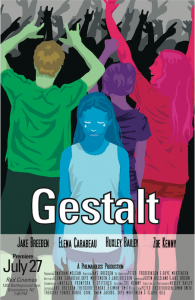
Their feature length film entitled Gestalt debuted at local movie theater RED Cinemas on Monday, July 27 at 7pm. Special thanks to the Kotis family, proprietors of RED Cinemas, for dedicating two of their theaters for the showing and then also opening a third to accommodate all of the guests. It was standing room only!!
The students, led by Middle School teacher, Jonathan McLean, spent four weeks learning all that basics needed to make a high quality film - script and screenplay writing, scoring a sound track, sound and video editing, pre- and post-production, location and studio shoots, etc.
Check out their film trailer below.
This summer, two of our Middle School faculty, Deirdre Kearney and Jenny Kimmel, attended Montessori teacher training at the reknowned AMI Montessori Orientation to Adolescent Studies located in Huntsburg, OH on the campus of the Hershey Farm School.
Deirdre joined GMS in 2007 and teaches Humanities in the Middle School. Jenny joined our faculty as an intern with our gardening program in 2003. She is the director of the environmental education curriculum at GMS and oversees the GMS Land program in Oak Ridge.
The AMI Orientation to Adolescent Studies offers an overview of Dr. Montessori’s approach to adolescents within the whole framework of human development. By exploring Montessori theory in depth, the participants will come to understand the contribution of the third plane of development (12-18 years of age) as crucial to the development of the individual and will be significantly prepared to aid development during this important time of life.
An important part of the orientation is to experience the life of the adolescent: their studies, their practical work, their community life, their growing need for independence, and their need to work side-by-side with adults. Through time spent in the prepared environment of the farm, participants explore this need for independence and an awareness of human interdependence, both of which become concretely realized and internalized in Montessori adolescent communities that genuinely provide a “school of experience in the elements of social life.”

